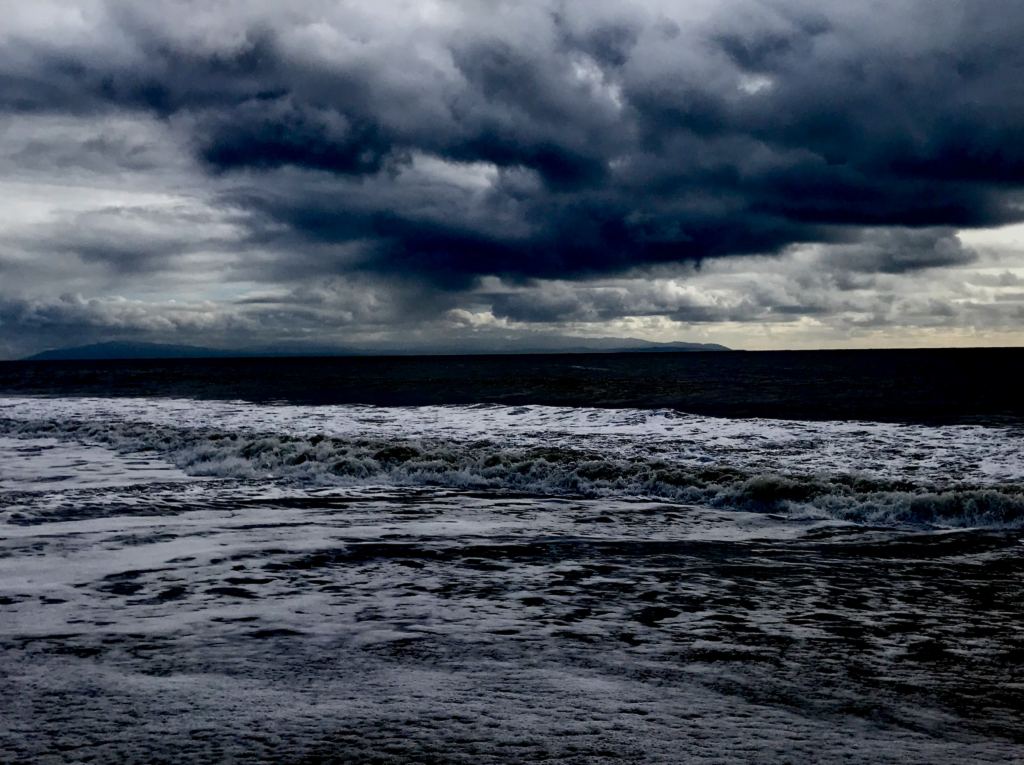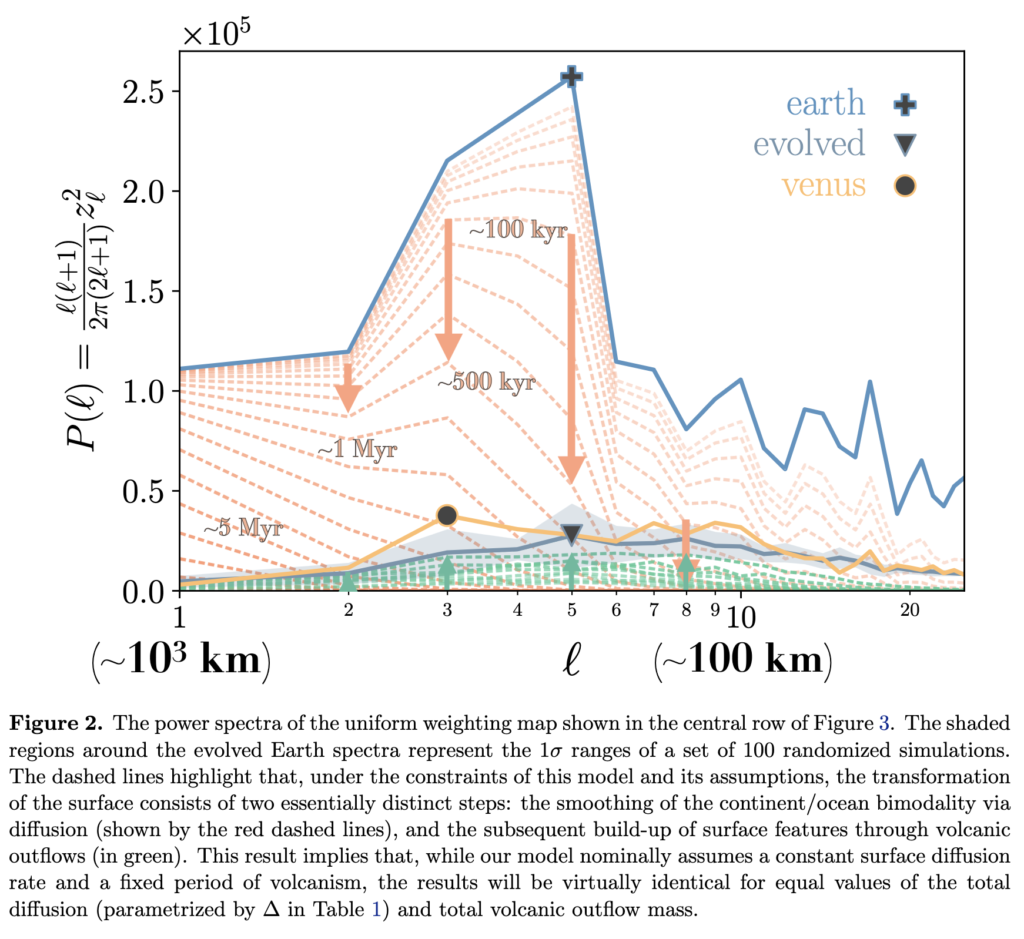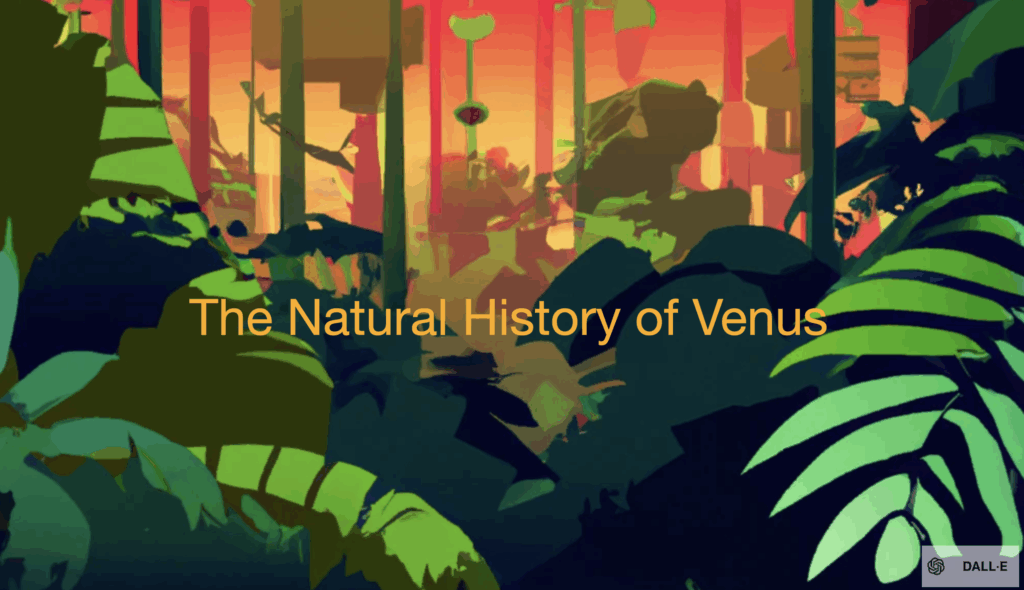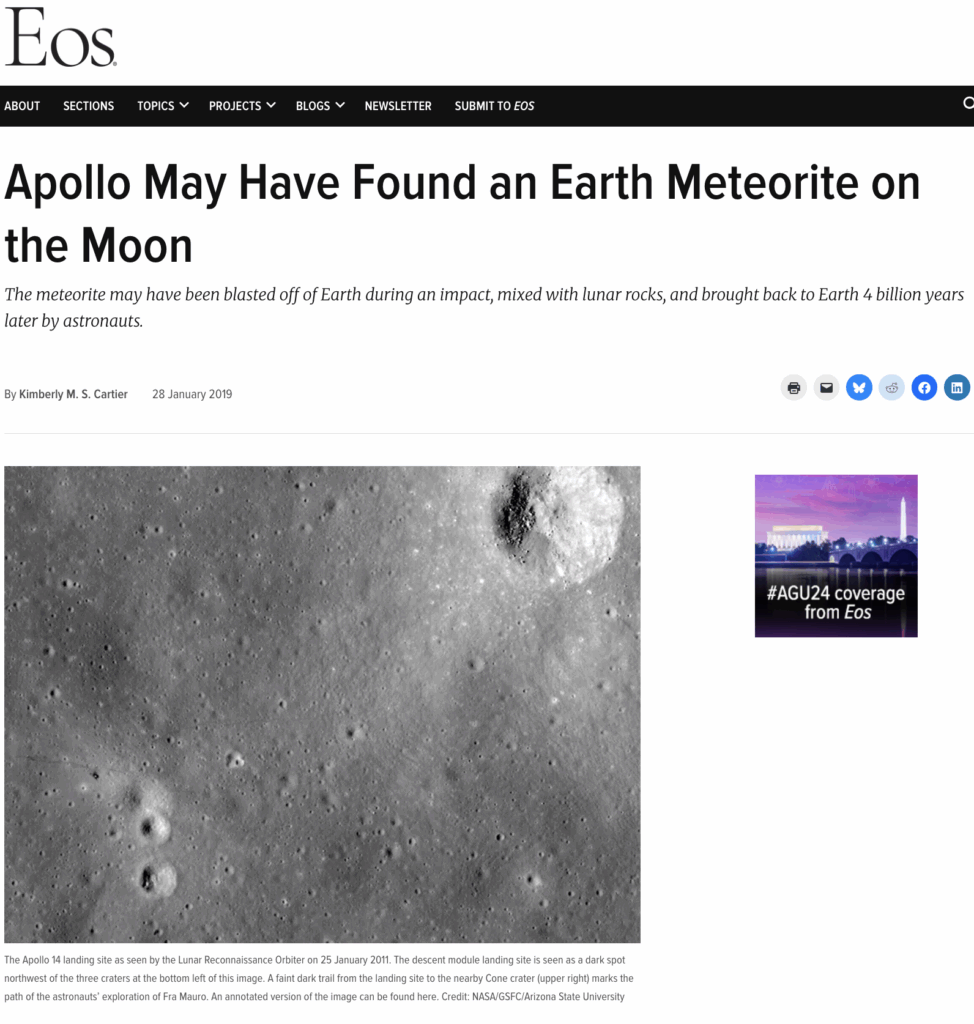
What’s the most interesting unanswered question in Solar System planetary science? Hands down, I’d argue it’s, Did Venus have oceans, and if it did, when did it lose them?
At first glance, Venus looks promising. It’s got essentially the same mass and radius as Earth. Now that the extrasolar planets provide context, Earth and Venus look like a “pod”, a consequence of the ill-understood process that permits a given system to repeatedly manufacture worlds that are near-clones. Sure, Venus is closer to the Sun. But the clouds reflect most of the light, and it was only in the 1950s that it became clear that perpetual overcast isn’t the only problem with the Venusian weather report.
The climate on Venus might not always have been so bad. The Sun was 30% less luminous at the start of its main sequence life, which means that the sunlight intercepted by Venus was once only 135% of the current terrestrial flux, the equivalent of moving from Detroit to Santa Monica.
This 1971 paper seems to be the first spark of realization that we might have “lost” Venus at some point in the distant past.

From there, it’s not hard to let the imagination run away. Continents. Oceans. Primordial forests. A vanished alien civilization. All within the realm of far-fetched possibility. Dude! Snap back to reality. The hybridization of Occam’s Razor and Bayes’ Theorem states simply, “That super-cool hypothesis of yours? It’s wrong.”
Nonetheless, the question of whether Venus had oceans (and if it did, when it lost them) seems like it should be answerable. How does one make an approach?
It’s easy to think of long-shot ideas, and indeed, I’ve been semi-preoccupied with this question for the last twenty years. Take phosphine — there’s an idea I didn’t think of… If there’s phosphine in the Venusian atmosphere then that points to life, and if there’s life, it’s likely is a remnant holdout from pre-greenhouse oceanic days. A nice story! It’s wrong, of course (see the bold-faced statement above) but it’s beguiling enough that efforts are afoot to spend a lot of money to pursue it.
This blog is named after the Oklo reactors, which demonstrate that under certain special circumstances, the occurrence of uranium criticality can be discerned long after the fact… What if there was a ancient nuclear war on Venus? Are there isotopes or isotope ratios created by a critical assembly of plutonium or uranium that would produce a detectable signature after billions of years? As far as I can tell, the answer seems to be no. What about uranium hexaflouride? It doesn’t occur naturally, it’s the go-to molecule for effecting isotope separation, and it’d be a gas under Venusian conditions. Unfortunately, the acid aerosols in the Venusian atmosphere would clear it out in virtually no time if it were released. It wouldn’t be around a billion years later.
If you scroll down to read the posts from the past year, you’ll find there are several that touch on a more sober-minded approach to the lost oceans problem. The idea explored is encapsulated in this figure:

and the hypothesized sequence (which is pretty cool, so therefore very likely wrong, but not completely certain to be wrong) is as follows:
- Venus had water oceans, an atmospheric pressure of order a bar, and plate tectonics.
- Steadily increasing solar luminosity drove a runaway moist greenhouse.
- Rapid erosion occurred as the oceans were being lost.
- Erosion ceased and plate tectonics shifted to stagnant lid volcanism.
- Lava from large igneous provinces created the current topography.
- Using Earth’s lava production rate points to oceans being lost in the late pre-Cambrian.
Arthur Adams and I worked on this around the time of Covid. It was the subject of an arXiv preprint and a Caltech GPS Departmental Colloquium in March of ’23 :

The buzz was then killed by a daunting, demoralizing referee’s report that left the prospects for a peer-reviewed journal publication very much in limbo, and pointed to the need to find a new approach.
This article from caught my eye:

The Eos article is a popular-level summary of a 2019 paper by Bellucci et al. that reports the discovery of an unusual granite-like fragment, a “felsic clast” in one of the samples returned by the Apollo 14 Mission. The clast contains zircon grains with geochemical formation signatures—specifically formation in the presence of high oxygen availability, low crystallization temperature (~1500° F), and high-pressure (~6.9 kbar)—that are atypical for known lunar rocks but are consistent with Earth’s continental crust. These traits suggest the clast either formed under unusually oxidizing, volatile-rich conditions at a level of order 170km below the lunar surface, or alternately, originated on Earth at shallower depth and was transferred to the Moon by a large impact over four billion years ago. The article pushes for the terrestrial origin hypothesis, and because I’m not an expert, it looked pretty convincing.
Given that set-up, it’s natural to ask — what if the clast is from Venus?
